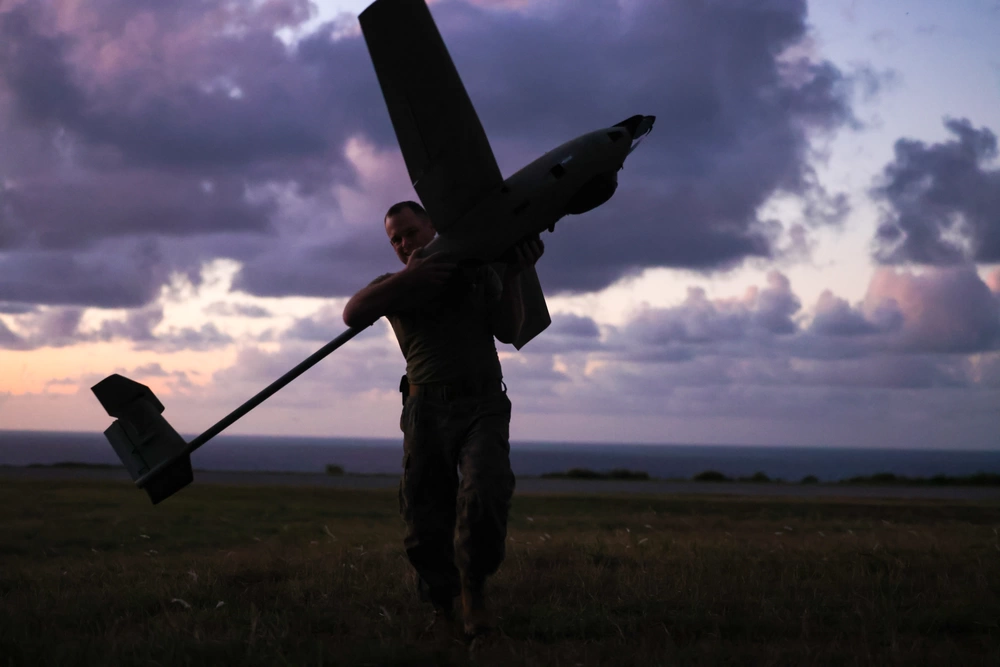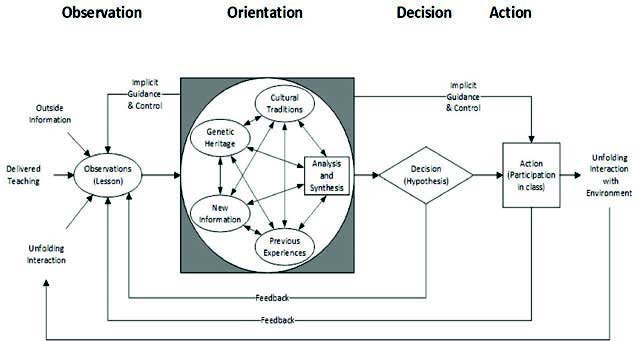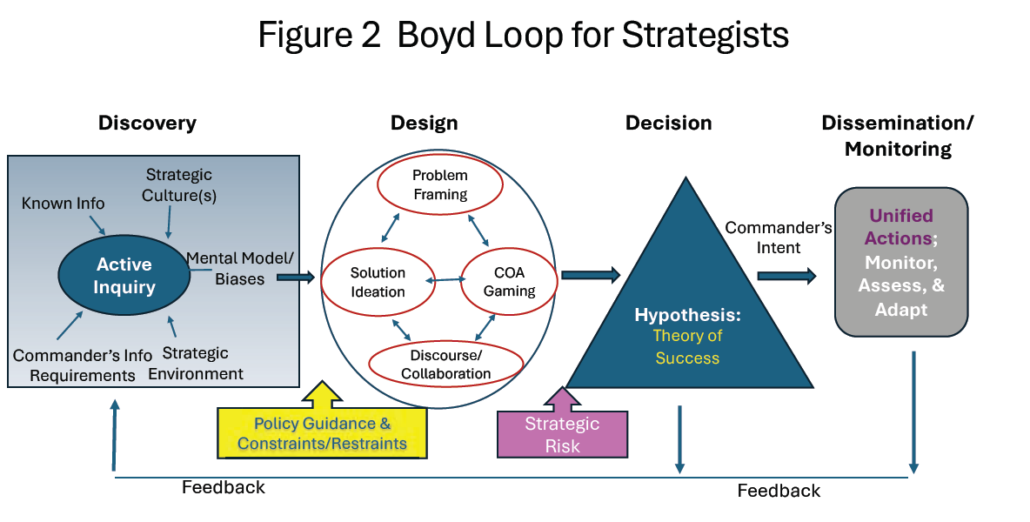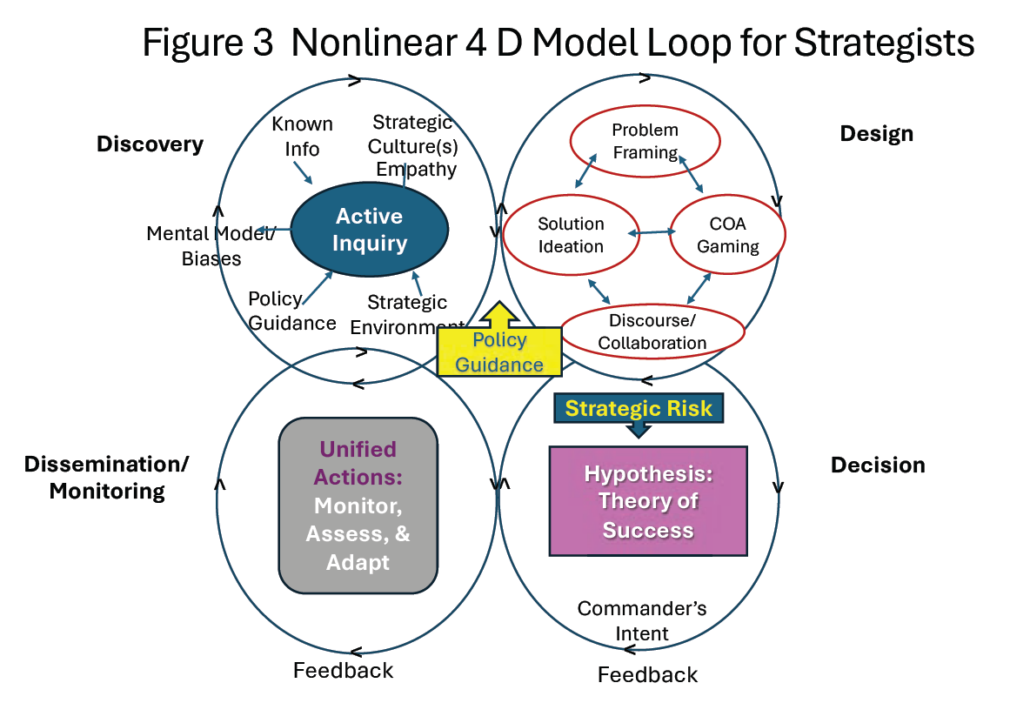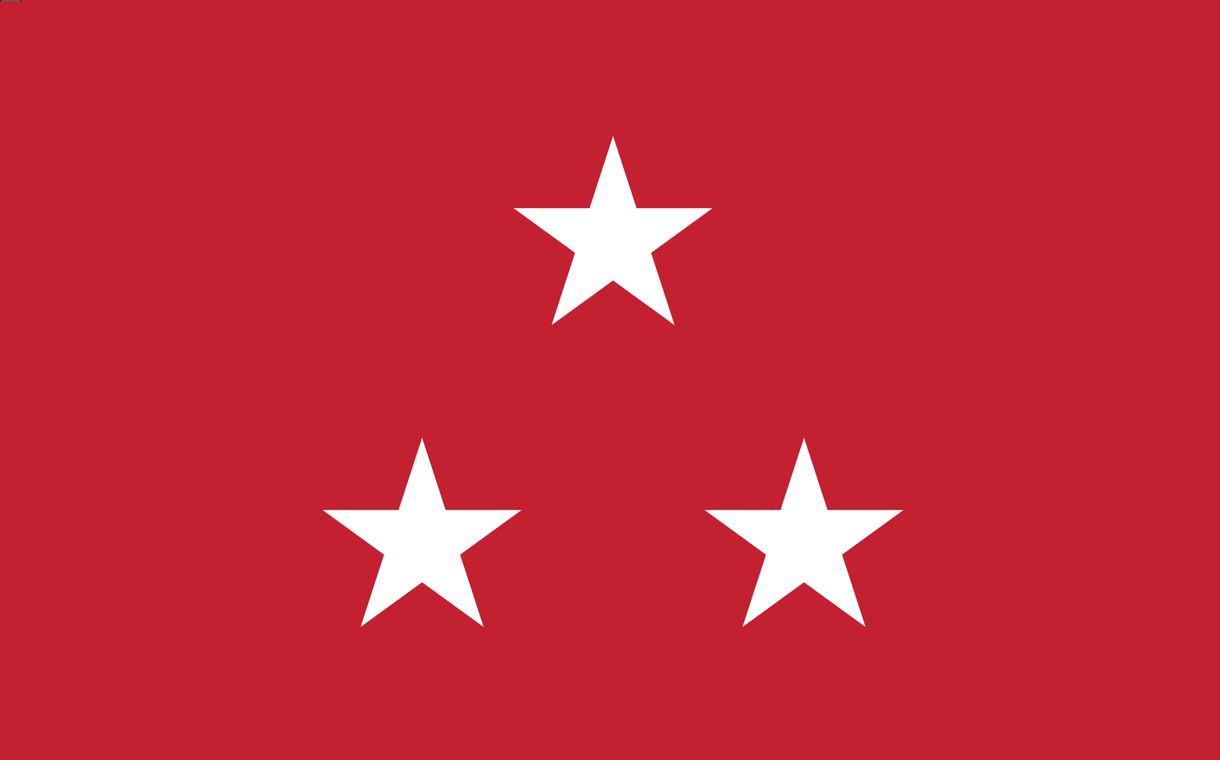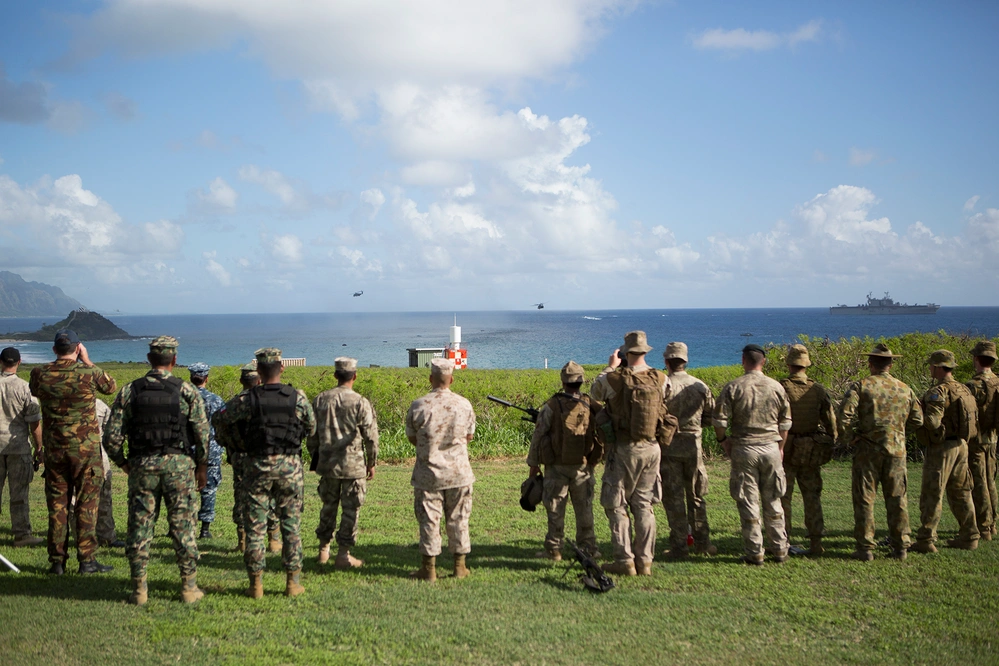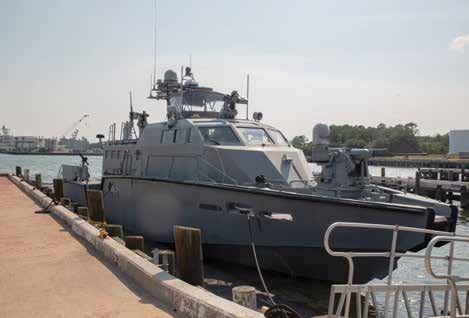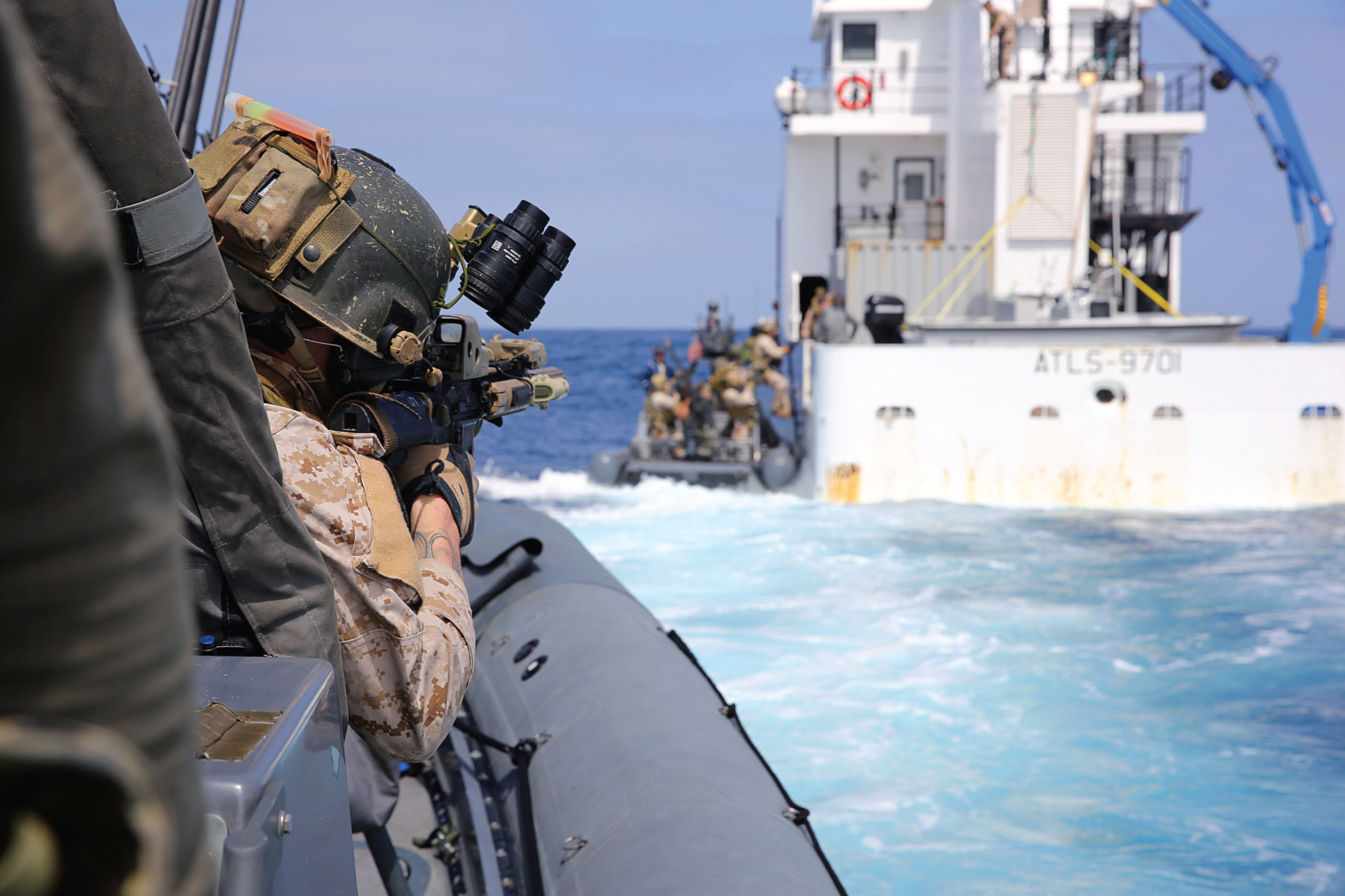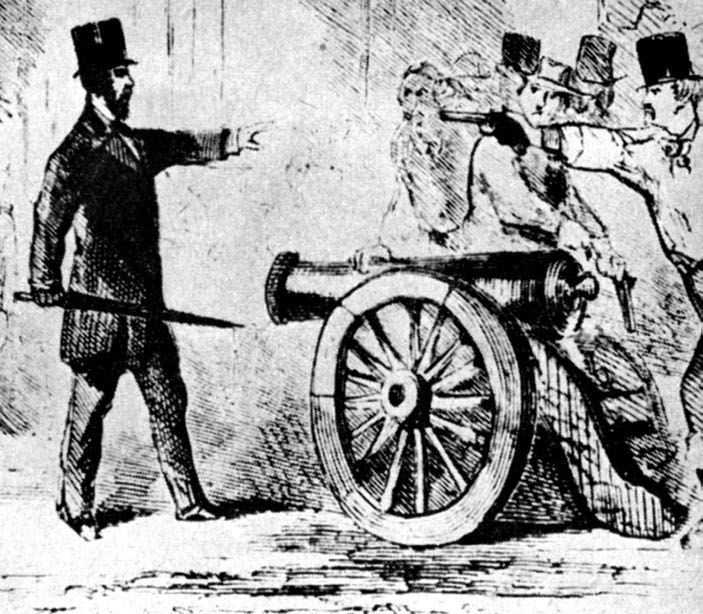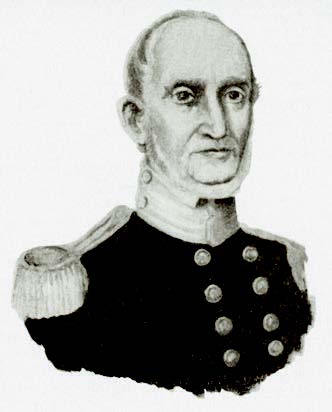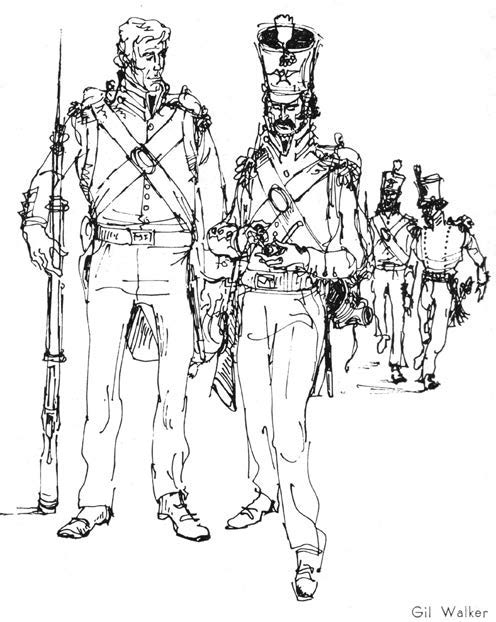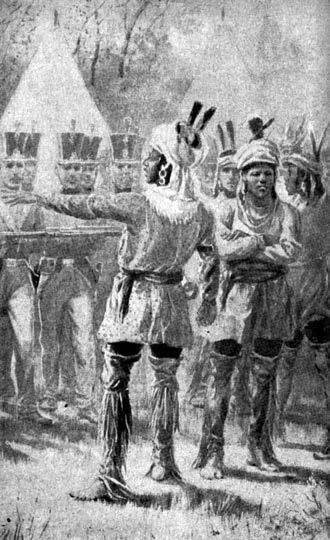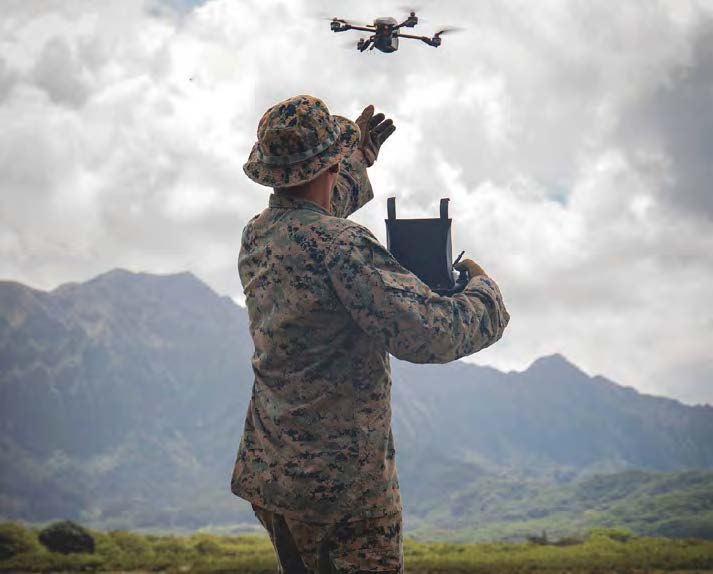Mission essential to the stand-in force
The Marine Corps must actively pursue the stand-in force’s (SIF’s) purpose to sense and make sense in joint and combined operations to provide relevant support the fleet and combatant commands (COCOMs), allies, and partners. Doing so means embracing the warfighting function of intelligence in all its permutations, including intelligence collection as a core competency of the Service and its units. Further, to align these core competencies to resourcing, the Service must seek out and define itself as the executive agent for joint expeditionary reconnaissance. The Marine Corps has a proud history of executing operations in support of the intelligence community (IC), which required the daring, but disciplined, operational execution unique to the Marine Corps. The Service’s intelligence resources, however, are increasingly misaligned and appear to be moving away from the key capabilities and characteristics that would position the Service to undertake the missions outlined in its own operating concepts. At the most fundamental level, the Service does not task its units to perform intelligence for any purpose other than to support local Marine Corps commanders. The Service has systematically dismantled its intelligence architecture to divert the resources to other functions. For the Marine Corps to achieve the vision of the SIF and provide a unique capability to the Joint Force, it will have to address the internal contradictions regarding resources and use of its intelligence capacity and effectively task and align itself to fill the intelligence gaps of joint and combined forces.
Force Design Mandates
Service leadership has declared that Marines will be “positioned forward, shoulder-to-shoulder with our allies and partners, leveraging all-domain tools as the eyes and ears of the fleet and joint force [emphasis added].”1 This statement implies that the Marine Corps will undertake intelligence tasks for joint commanders. The concept further states:
Conducting maritime reconnaissance and counter-reconnaissance is an enduring function for stand-in forces. Every element within the force focuses on either performing or supporting this function, of which there are two main aspects. The first orients on the potential adversary in support of fleet operations. The second focuses on threats against the stand-in force.2
Identifying adversary locations, equipment, and intentions as well as threats to the force are unquestionably intelligence tasks. This vision positions the Marine Corps as a unique collector, able to develop battlefield awareness with or without direct contact with the adversary, especially in competition.
Executing the vision requires cutting-edge intelligence collection capabilities and platforms but also experience integrating with the intelligence data and network architectures of COCOMs. Most importantly, it requires a concerted effort to be part of the collection and analysis community of that COCOM under the aegis of the interagency IC in the modern Joint Force. An inherent requirement in positioning forces forward, especially in competition, is that SIF units provide relevant and unique contributions to the common intelligence and operating picture to justify positioning them so close to the adversary. For example, a SIF can provide key collections capabilities and terminal targeting identification resources not otherwise available or degraded without the placement and access provided by the SIF.
One common argument is that the SIF is for command and control (C2) rather than for organic collection. However, the nature of current capabilities, by both the United States and its competitors, is such that worldwide C2 of sensors, analysts, and shooters will be provided from any location. For example, the Air Force’s “480th Intelligence, Surveillance, and Reconnaissance Wing … comprises six groups, 23 squadrons, and three detachments operating in four locations. The mission of the 480th ISR Wing is to lead globally networked ISR operations for the U.S. Air Force while headquartered at Joint Base Langley-Eustis, Virginia.”3 It may be advantageous, especially in targeting C2, to have a sense of the collective picture, but it is not necessary to have C2 forward to control and connect ISR to over-the-horizon firing platforms—something that the COCOM must actuate anyway. The placement and access of the SIF are irrelevant for C2; they are indispensable for intelligence collection.
Furthermore, eyes and ears for the fleet and the Joint Force require the infrastructure and connectivity to the interagency that supports robust intelligence collection. The SIF as described would be positioned forward with allies and partners—but in competition before conflict. So, contact with potential adversaries is made through sensors—intelligence collection—rather than physical contact or reconnaissance by fire. In the realm of military and defense intelligence, that contact is global for early warning and strategic preparedness, just as cognizance of global sensing by potential adversaries should be important to every unit. Establishing a baseline of normal activities is fundamental to identifying changes that indicate or warn of possible action. This baseline encompasses a spectrum of monitoring efforts from national-level surveillance systems that track broad patterns to tactical-level sensors that capture detailed, realtime data. By analyzing these activities, intelligence agencies establish a pattern of life from which identified deviations provide warning that enables proactive measures to mitigate risk. The complexity of this task requires a coordinated approach across various levels of intelligence gathering, to ensure timely reporting. At the broadest level, for the entire IC, the Director of National Intelligence describes: “The IC … monitoring and assessing direct and indirect threats to U.S. and allied interests. For this requirement, the IC’s National Intelligence Officers—and the National Intelligence Council that they collectively constitute—work closely and regularly … across the IC.”4 Therefore, to be the SIF described, Marines across the globe must tie closely to the IC and understand their intelligence role as part of that community.
Historic Relationships
Historically, the Marine Corps has worked closely with the IC, though examples can be little-known and difficult to research due to their nature. During World War II, Marine Corps personnel were involved in Office of Strategic Services activities, integrating intelligence functions into Marine operations.5 Relevant to the Pacific theater, during the conflicts in Korea and Vietnam, Marines (including a future commandant) participated in covert operations with the CIA along the coast of the People’s Republic of China during the Korean conflict, conducting the intelligence collection of the time and supporting anti-communist movements.6 In the Vietnam War, Marine reconnaissance units worked frequently in joint missions with the CIA and other agencies, including participation in the Phoenix Program, to find and maintain contact with the Viet Cong.7 In these conflicts, Marine units also utilized signals intelligence (SIGINT) and electronic intelligence gathered by intelligence agencies, sometimes processed as far away as Hawaii, to plan and execute operations.8 This technological integration was a fact of life for Marines. From beginnings under Al Gray after Korea and through the 1990s, sailors and Marines executed air, surface, and subsurface “direct support” SIGINT/EW operations with the fleet on behalf of NSA across the Pacific. Marine Corps IC integration changed to be more specialized with the advent of Special Operations Command and as the Corps formalized its intelligence structure with the establishment of the Marine Corps Intelligence Activity in 1987.9
In Marine Special Operations Command and beyond, individual Marines remain among the most prized intelligence personnel in the Joint Force and the IC. During Operation Inherent Resolve, intelligence Marines supported joint and coalition forces in the fight against ISIS providing realtime intelligence and electronic warfare support, enabling precise targeting, and disrupting enemy communications. Also, MEUs operate under all geographic combatant commands with intelligence and reconnaissance detachments to provide for amphibious operations, humanitarian assistance missions, and crisis response scenarios. Their ability to quickly adapt and provide actionable intelligence in dynamic environments is a key asset to joint and Coalition forces.10 “What makes a good intelligence Marine is being able to identify and incorporate all the intelligence disciplines, and incorporate all the information they gather to turn into intelligence. Hard work, dedication and the motivation to do better than yesterday is what makes an exceptional intelligence Marine.”11 From Global Force Management through individual augmentation, everyone in the Joint Force always wants the individual intelligence Marine because they are known to be a well-trained, skilled, aggressive, force-multiplier who will use initiative to seize any opportunity to advance the mission.
Mission Essential Tasks
The Service should lean into its established strengths and evolving capabilities to seek executive agency for expeditionary reconnaissance as a part of intelligence. “From a multi-Service and joint perspective, the Marine Corps’ role, both historically and in emergent concepts, can be summed up in two words: expeditionary reconnaissance.”12 Reconnaissance is common and special forces already do focused advanced reconnaissance. The Service’s executive agency should be for advanced, expeditionary reconnaissance at scale, being the pillars of the complete joint doctrine, organization, training, materiel, leadership and education, personnel, and facilities policy director for the capability. Executive agency would be the logical extension of Service concepts, provide programs and resources associated with executive agency, and align the Service with the IC in a distinct and capability-defined way for which IC resources could be channeled. More than any other war‑
fighting function, intelligence has broad connectivity and resourcing across the government through the Director of National Intelligence as well as the Secretary of Defense, the eighteen members of the U.S. IC, allied and partnered intelligence capabilities, and strong relationships with law
enforcement, diplomacy, and commerce. While intelligence comes with ample oversight and constraint to ensure liberal-democratic values endure, the opportunities outweigh the challenges, especially for a forward-deployed-focused force. To enact the operating concept’s vision, there could be no better avenue to success than the intelligence community. Taking that avenue, however, would be a radical change for the Service.
It would be a radical change because the Service takes neither intelligence nor reconnaissance missions seriously enough to define them as core tasks for its pacing units. So, if “every element within the force focuses on either performing or supporting this function” is ever to become a reality, the Marine Corps must address the core missions of the Defense Readiness Reporting System against which the Service measures and reports its readiness.13 The Marine Corps Task List includes a comprehensive list of intelligence and reconnaissance tasks under intelligence and provides the supporting architecture in the C2 section. The tasks, however, do not describe an element producing a key capability for the fleet and Joint Force but rather focus internally on the Service’s local commander: “To assist tactical Commanders in determining and prioritizing their intelligence requirements (IR), to enable them to plan and direct intelligence, counterintelligence, and reconnaissance operations to satisfy these requirements.”14 Additionally, these tasks do not extend to the core mission essential task (MET) list for the MEU, the basic MAGTF. They instead are translated into a single task for the command element, one that is similarly worded to focus on the MEU commander rather than the broader joint or coalition forces.15 Marine infantry regiments and battalions, arguably still the fundamental units of the Service, have no core intelligence or reconnaissance tasks at all in a list revised contemporaneously with the operating concepts declaring that all elements would support these functions.16 These are the METs against which the Service measures itself officially in the Defense Readiness Reporting System to report to the Joint Chiefs of Staff. Core METs “define the basic capabilities of a unit,”17 so for the Marine Corps, those basic capabilities do not include intelligence and reconnaissance. Why, then, would a warfighting command—the COCOM—look to the Marine Corps to be a SIF if the Service does not even set for itself and report the tasks necessary to execute the concept?
Intelligence Malpractice
Not only is the Service not assigning itself these tasks but it has embarked upon an experiment to invest in information as a new warfighting function by systematically divesting its Marine intelligence apparatus and abdicating its role as a member of the IC. In introducing information as a joint function, the Joint Concept for Operating in the Information Environment states: “To address this challenge and achieve enduring strategic outcomes, the Joint Force must build information into operational art to design operations that deliberately leverage the inherent informational aspects of military activities.”18 This cautionary approach puts modern focus on something for which militaries have always existed—sending a message of strength to adversaries through cognitive effect using operational activities and applicable characteristics; it explicitly does not insist on redirecting resources out of existing joint functions.
By contrast, standing up the Deputy Commandant for Information (DC I) in 2017, the Corps did not produce any doctrine to define information until 2022 (MCDP 8).19 The Marine Corps perceives a change of military characteristics described in this Marine Corps doctrinal publication that requires a redirection of effort and resources (a divest-to-invest strategy) from established functions, particularly intelligence. Shortly after producing doctrine, the Marine Corps disposed of its separate Director of Intelligence (the only military Service to do so; the Coast Guard and Space Force both have two-star positions for it). The then DC I noted that “we live in an information environment all the time,”20 but we always have. The characteristics have changed in the Digital Era, but the information environment has always been part of the nature of conflict. Making sense of that environment is an essential part of the intelligence function.
Moreover, MCDP 8 focuses on characteristics rather than nature and has the Marine Corps mirror-imaging American society onto adversaries and focusing on the kinds of information challenges associated with terrorism. The MCDP prepares the Marine Corps for the last war. About the Service shift to information, MCDP 8 states: “This change stems from advanced societies’ dependency on information … With dependence comes potential vulnerability, and with vulnerability comes possible opportunity to seize information advantages to achieve our objectives and impose our will.”21 Against autocratic peer adversaries who tightly control all internal narratives at every level, this statement assumes that the Service can wield information via open systems and applications just like those in liberal democracies. Autocracies tend to retain monopolies on information as well as violence—so much so that even terrorists rarely attempt their tactics against them. Intelligence provides the means to penetrate the information environments of autocratic systems, to understand the motivations of leadership, instructions to society and militaries, and intentions across the instruments of national power. A possible Marine Corps contribution to information might be executed through the course of Service operations, using the “inherent informational aspects of military activities,” as noted by the Joint Staff, but those operations will remain within the military sphere. Exerting informational influence in foreign contexts, by contrast, is for most of the IC a common intelligence operation, not some new function. Removing influence efforts from the strict control that the IC provides in global competition against autocracies gives the appearance not of something novel but of intelligence malpractice.
Opportunity Cost
The Marine Corps’ fielded intelligence capabilities have been subsumed into MEF Information Groups (MIGs) supporting information control centers. The MIGs’ information control centers’ purpose is “providing information environment battlespace awareness,” describing the importance of this by saying that “Marine Corps officials had no way to know what was happening in that arena.”22 These statements show a remarkable lack of awareness of what the IC as a whole and intelligence as a discipline have been doing since inception. Intelligence exists for battlespace awareness in any domain. Having formed its cyber component by draining the human resources out of its SIGINT/EW apparatus, the Service then diversified participation in EW across specialties previously unfamiliar with it, despite the very successful history of its SIGINT/EW fields. The Marine Corps eliminated its sniper platoons and halved the number of intelligence officers for its infantry formations in one year, apparently assuming infantry movement to contact would suffice in place of any reconnaissance. In the SIF concept, however, these formations are deployed with permission in the territories of allies and partners in the first island chain. To further stir the confusion, information specialties align themselves in fielded units into G39 special activities in operations represented at the Service headquarters by the DC Plans, Policies, and Operations, rather than the staff codes represented by DC I.
No other warfighting function, however, provides independent resources like the IC. From the interagency and inter-governmental community, data and communication architectures, and relationships, intelligence provides a resourced set of capabilities specifically applicable to the SIF concept. Instead of moving forward to present the IC and the Joint Force with a viable set of initiatives under its new operating concepts that could have been codified into executive agency within the community, thus accessing its unique programs and funding streams in National and Military Intelligence Programs, the Marine Corps moved tangibly away, divesting from intelligence at the Service level. The IC publicly reported a budget in fiscal year 2024 at ~$101.7 billion, with 13 percent growth over two years—possibly not counting all general defense intelligence, cyber, and other associated funding while still almost double the Marine Corps budget in the flat defense expenditures of the same period. 23
The Marine divestiture from intelligence decisively set the Service back at least a generation, both in manpower and resources. It should be no surprise that while COCOMs continue to ask for high-quality, individual intelligence Marines, they do not ask for Marine formations that have neither the task, the personnel, the capabilities, the integration with the IC, nor the culture to even understand a SIF. As a result, to execute its concepts, the Marine Corps will have to reorient its role in intelligence by both revitalizing intelligence structures and reorienting its units with pertinent core tasks that ensure that every element has as part of its role to either execute or support operational ISR.
Corrective Measures
Broadly speaking, Service pacing items need core METs for ISR, beyond the sixth function of Marine aviation. These will need to be carefully written to support the fleet, the COCOM, and the IC—not just the tactical Marine commander. The Service needs to revitalize its intelligence structures starting with Headquarters Marine Corps portfolios. Aligning a deputy commandant to a recently identified, doctrine and resource-free, nascent concept unlinked to anything else in government by using the resources of existing warfighting functions is unwise. Recognizing the importance of intelligence as a warfighting function that directly supports all other functions would be far more practical, placing the nascent function under the direction of staff leadership whose moniker includes existing functions, programs, resources, and agencies to make it recognizable to those with whom the staff must interact. Something inclusive such as DC C4ISR would accomplish that mission. The Service also needs to reestablish a point of contact specifically for the IC, a Director of Intelligence, preferably at least at the grade of the two smallest Services. Then it must seek to revitalize lines of effort and thinking that lead to success with intelligence.
Starting in the year 2000, under the first Director of Intelligence Michael Ennis, the Marine Corps began exploring an idea it eventually termed the Marine Corps Intelligence Surveillance and Reconnaissance Enterprise (MCISRE). The MCISRE was brought into focus by Vincent Stewart from 2009 onward with the leadership, charters, boards, and structure needed to shift from concept to reality. These efforts culminated in a MCISRE plan, published under Michael Groen in 2014 for coordinating efforts across the Service.24 Never an authoritative command like the Army’s Intelligence and Security Command, the Air Force’s 16th Air Force, or the Navy’s 10th Fleet, the MCISRE nonetheless provided an organizing feature for the Service contribution to intelligence. While a Service-wide command would be the most efficient approach in a globalized era, at the very least the MCISRE needs revitalization to work these tasks back into the Service culture and then provide a clear, distinct, intelligence program-worthy idea for the Joint Force in executive agency for expeditionary reconnaissance.
The operating concepts developed for Force Design, however, are for the whole force (“every element”). The MCISRE will provide a focal point of knowledge, experience, and relationships to the IC that can help bring the SIF from concept to reality—but the whole force must be part of it. “Due to … flexibility, scalability, maneuverability, and adaptability,”25 the MAGTF remains the Marine Corps’ essential deploying formation. Task organization has also been an enduring Marine Corps strength and the fundamental reason for the MAGTF. Any forward deployed sense-and-make-sense function can be a task-organized enduring toolkit of the MAGTF without creating separate units. Given the mission of the COCOM, a MAGTF can certainly man, train, equip, organize, and deploy to perform operational ISR on behalf of the fleet, COCOM, Joint Force, and IC as described in the concepts. To task organize, however, the unit first needs the task. Every element must have core mission essential tasks for operational ISR.
>Col David is the former Deputy Director for Intelligence Division under the Deputy Commandant for Information/Director of Intelligence. He is currently the Marine Chair for the Eisenhower School for National Security and Resource Strategy.
Notes
1. Gen David Berger, A Concept for Stand-In Forces, (Washington, DC: December 2021).
2. Ibid.
3. 16th Air Force, “480th ISRW,” 16th AF, n.d., https://www.16af.af.mil/Units/480ISRW.
4. Office of the Director of National Intelligence, “Annual Threat Assessment of the U.S. Intelligence Community,” ODNI, Washington, February 5, 2024, https://www.dni.gov/files/ODNI/documents/assessments/ATA-2024-Unclassified-Report.pdf.
5. Michael Decker and William Mckenzie, “The Birth and Early Years of Marine Corps Intelligence,” Marine Corps University, n.d., https://www.usmcu.edu/Outreach/Marine-Corps-University-Press/MCH/Marine-Corps-History-Winter-2019/The-Birth-and-Early-Years-of-Marine-Corps-Intelligence.
6. Frank Holober, Raiders of the China Coast: CIA Covert Operations During the Korean War (Annapolis: Naval Institute Press, 1999).
7. Rufus Phillips, Why Vietnam Matters: An Eyewitness Account of Lessons Not Learned (Annapolis: Naval Institute Press, 2008).
8. Naval History and Heritage Command, “The Ten Thousand-Day War at Sea: The U.S. Navy in Vietnam, 1950–1975,” Hampton Roads Naval Museum, April 22, 2021, https://www.history.navy.mil/content/history/museums/hrnm/explore/VietnamExhibitPage/IntelligenceSpecialOperations/KnowingtheEnemy0.html.
9. Michael H. Decker and William Mackenzie, “The Birth and Early Years of Marine Corps Intelligence,” Marine Corps History, 5, No. 2 (2019).
10. Notable in several CRS reports: Congressional Research Service, “U.S. Special Operations Forces (SOF): Background and Issues for Congress,” Congressional Research Service, March 22, 2019, https://crsreports.congress.gov/product/pdf/RS/RS21048/62; and Congressional Research Service, “The Unified Command Plan and Combatant Commands: Background and Issues for Congress,” Congressional Research Service, January 3, 2013, https://crsreports.congress.gov/product/pdf/R/R42077/11.
11. Marine Corps Times, “Marines Dish on Mysterious 0211 Duty,” Marine Corps Times, August 9, 2014, https://www.marinecorpstimes.com/news/your-marine-corps/2014/08/09/intel-marines-dish-on-mysterious-0211-duty.
12. Maj Jon Schillo, “Who We Are and Where We Are Going,” Marine Corps Gazette, January 15, 2024, https://www.mca-marines.org/gazette/who-we-are-and-where-we-are-going.
13. POR Readiness Branch, Commanders Readiness Handbook, (Washington, DC: Headquarters Marine Corps, Operations Division, 2020).
14. Headquarters Marine Corps, MCO 3500.26B, Marine Corps Task List (MCTL 2.0), (Washington, DC: June 2024).
15. Headquarters Marine Corps, NAVMC 3500.99, Marine Expeditionary Unit (New Training and Readiness (T&R) Manual, (Washington DC: November 2012).
16. Headquarters Marine Corps, NAVMC3500.
44D, Infantry Training and Readiness Manual, (Washington DC, May 2020).
17. Headquarters Marine Corps, NAVMC 3500.106A, Ground Training and Readiness Program Manual, (Washington DC: May 2021).
18. Gen Paul Selva, “Joint Concept for Operations in the Information Environment,” JCS, July 25, 2018, https://www.Jcs.Mil/Portals/36/Documents/Doctrine/Concepts/Joint_Concepts_Jcoie.Pdf?Ver=2018-08-01-142119-830.
19. Headquarters Marine Corps, MCDP 8, Information, (Washington, DC: June 2022).
20. LtGen Lori E. Reynolds, “DCI Letter,” Marine Corps Gazette 104, No 4, (2020).
21. Ibid.
22. Mark Pomerleau, “Here’s What Marines’ Information Command Centers Will Do,” C4ISRNET, December 6, 2019, https://www.c4isrnet.com/information-warfare/2019/12/06/heres-what-the-marines-information-command-centers-will-do.
23. Director of National Intelligence, “U.S. Intelligence Community Budget,” Director of National Intelligence, 2024, n.d., https://www.dni.gov/index.php/what-we-do/ic-budget.
24. MCISRE Plan, “MCISRE Plan 2015–2020,” Marines.mil, September 1, 2014, https://www.hqmc.marines.mil/Portals/133/Docs/MCISRE_Final_Sept2014.pdf.
25. Staff, “Organized for Air, Land, Sea, and Cyber,” Marines.com, n.d., https://www.marines.com/about-the-marine-corps/marine-corps-structure/air-ground-task-force.html.


